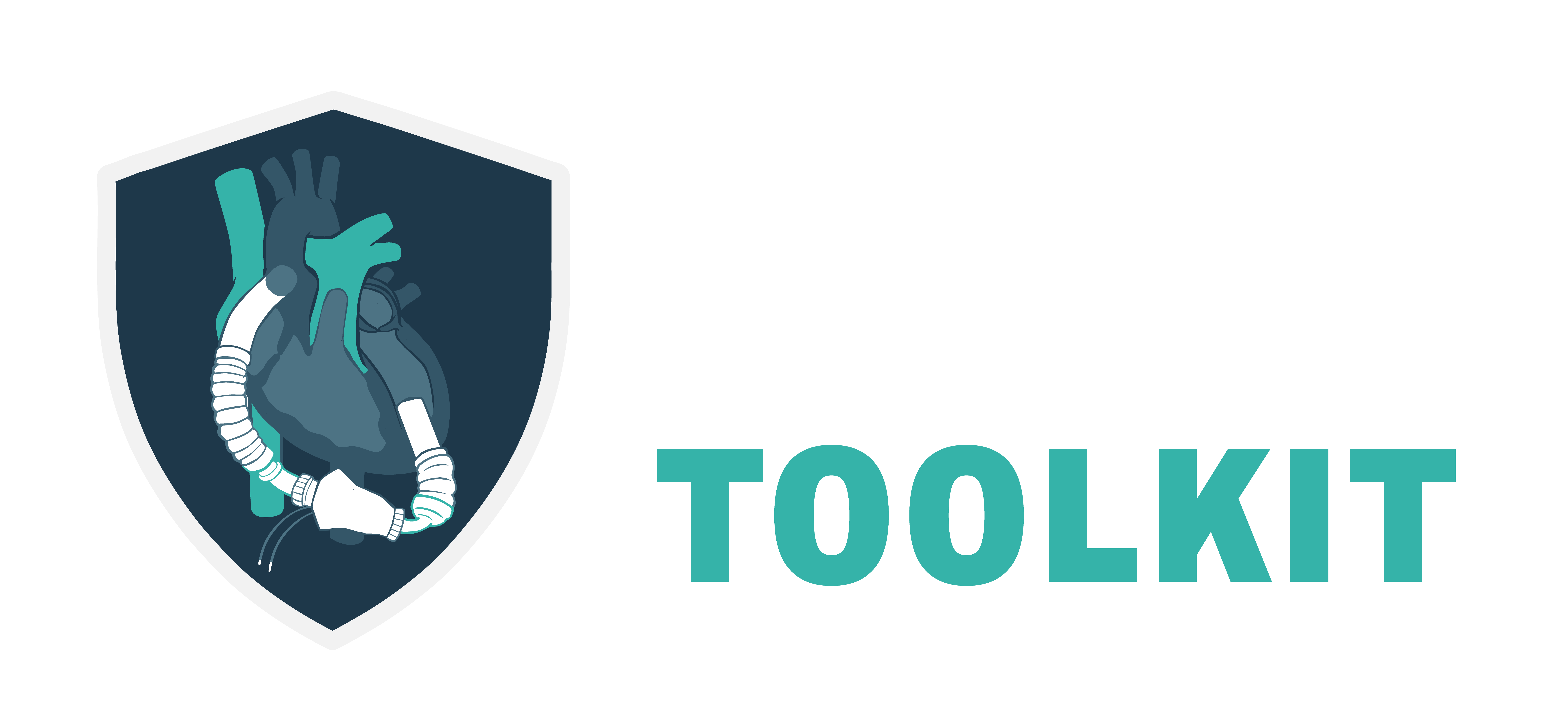
Nearly 30% of patients develop a spectrum of infections within 90 days after their durable LVAD implantation.
While some infections (e.g., pneumonia) may not be directly attributed to an infection “non-device related,” others are associated with the device itself “device-related”. These infections increase a patient’s risk of major morbidity and mortality, are associated with decreases in health-related quality of life, and increase healthcare expenditures.
Our team has developed a toolkit of recommendations that LVAD programs may use to mitigate the risk of infections. The 39 recommendations were derived from extensive national analyses of clinical and administrative data, as well as interviews with 73 LVAD team members and 14 subject matter experts.
The toolkit provides a step-by-step implementation process for LVAD programs. The toolkit does not identify which antibiotic to use or the key components of a driveline dressing kit. Rather, the toolkit provides a framework and resource materials for evaluating your program’s strengths and weaknesses, prioritizing actions and monitoring progress against your goals. We also provide a set of key background references for your review as well.
Resource Quick Links
Navigate to additional resources that support the implementation of the LVAD Infection Prevention Toolkit.
Goals of the LVAD Infection Prevention Toolkit
This toolkit provides the necessary foundational support for centers to advance infection prevention activities in the setting of durable left ventricular assist device (LVAD) implantation.
This toolkit includes infection prevention recommendations and accompanying implementation materials (e.g., guides, data collection worksheets).
This toolkit groups recommendations into the following four categories based on their foci and unique set of resource documents and implementation strategies:

1
Identify areas of focus to prevent infections post-implant.
Use your existing LVAD multidisciplinary team meetings to review your team’s strengths and weaknesses regarding infection prevention.
Your team’s strengths and weaknesses can be assessed by reviewing your STS Intermacs reports, existing protocols (e.g., patient/caregiver education, management of driveline infections). Sources can be documented in the Data Collection Worksheet.
Your team will use these data and a summary of your discussions to identify which area(s) your team would like to work on.
Possible Areas of Focus
Technology
Team Communication
Staffing
Caregiver Education
Provider Education
Protocol Updates
Care Bundles
Assessment and Improvement
2
Review recommendations for each of your areas of focus.
The Recommendation Lookup Guide is designed to help your team identify recommendations specific to the areas you have selected to focus on.
3
Prioritize recommendations based on ease of implementation and impact.
Use our fillable prioritization table (Appendix C in toolkit) to help determine where to start. For each recommendation, consider:
- Anticipated patient and center impact
- Ease of implementation
- Actions needed to implement the recommendation
- Estimated timeline
4
Identify team member roles to implement recommendations.
Your team has now prioritized the infection prevention recommendations that you will implement. Use the the acronym L-V-A-D-S to help your team identify the necessary roles and responsibilities to implement each recommendation.

Leader
Someone assigning strategic direction. The Leader works closely with the Delegator. The Leader sets the team member roles (Step 4).

Validator
Someone who helps provide external review and/or data support (Steps 1, 6, and 8).

Actor
Someone who performs a task (do-er, taking action in the real-world) (Step 8).

Delegator
Someone who facilitates and helps delegate tasks (often called a Project Manager). The Delegator will develop the action plan (Step 5) and monitor and provide feedback (Steps 7-8) in coordination with the Leader.

Supporter
Someone who provides data support to the team. The Supporter will be relied on for Step 6.
5
Develop an action plan and desired outcomes with LVAD team.
Many teams will use a Plan-Do-Study-Act (PDSA) approach to guide their approach for Steps 5-8. The first part of the PDSA cycle is to plan your intervention and identify how you will assess whether your intervention worked.

7
Set the action plan in motion.
Your team has now assigned roles and responsibilities to advance your prioritized infection prevention recommendations, as well as identified the data elements needed to move forward with your study. We encourage you to start with small tests of change, and incrementally move forward thereafter.




8
Monitor and report back outcomes.
Your team has now begun the task of monitoring progress on your intervention. Successful teams often have a project-specific dashboard that includes process measures and outcomes. These teams share updated dashboards with their team members on a frequent basis.
During this step, your team will likely identify barriers that impede your progress (e.g., challenges with data
collection, finding time to meet as a team). Anticipate several PDSA change cycles as your team advances its workflow and engagement with frontline clinical staff.



